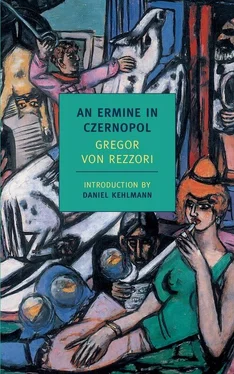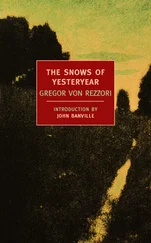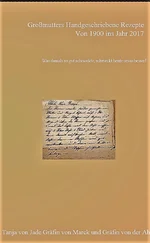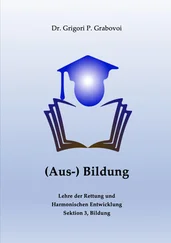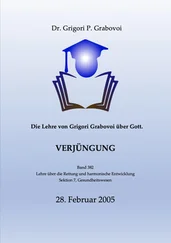Nor were we wrong in our assessment, although the cause for our misgivings proved different than we had imagined, having less to do with our old friend himself and more with what he left behind — the emptiness that followed his visits. Certainly the dandyish elegance that burst out at us, dapper and dazzling, like a chestnut freshly released from its Siberian shell, was so exaggerated that we became increasingly suspicious it was really a kind of disguise he used to sneak into places, or, even worse, to feign sophistication in order to conceal something menacing. Consequently his banter and compliments, his general bowing and scraping, seemed all the more trite and provincial, especially given his very serious and deliberate delivery — though this might have been attributable to the cold numbing his cheeks and mouth. And so his genuine gravitas, his perspicacity and his prodigious mind, acquired something dangerously devious and inscrutable. But that would have hardly frightened us children. We loved the prefect, and whenever certain of his more dubious traits happened to surface, we were always ready to view them as play-acting — and his willingness to play in that way only made us appreciate him all the more. He was, furthermore, willing to break the rules, and bribed us with huge boxes of sweet-smelling hydrangea-colored Polish fondants in a mix of matte and pomaded hues, and once, to our delight, and even awe, he brought a curly-haired mechanical doll of dreamlike beauty, dressed in luxuriant lace who held a bird cage stiffly in front of her, with a tiny, slender green oriole that twittered and chirped restlessly about, while the doll turned her head this way and that, her round fairy-tale eyes opening and closing at regular intervals, and her left hand beckoning with a very subtle arrangement of fingers, in the best-mannered way of attracting attention.
Herr Tarangolian always took the long sled ride in the late morning. He only traveled to closer acquaintances, where he never extended his stays beyond what was considered appropriate: he would stop in for an hour or so for tea, but never stay for a meal. After politely imbibing a little liqueur he always took his leave, and once again we peeped through the frosty tendrils on the windowpane as he leaned on his batman and wrapped himself up in his furs and blankets. Then the giant coachman would instantly bring the horses to a quick trot with a slight tensing of the reins and a quick touch of the whip, and, melting into a rainbow of colors, the sled would glide across the icy twines on the window, into the glittering palm fronds and acanthus thickets, and the gray, yawning silence of the snowy countryside would close over the fading sound of the sleigh bells. The batman was taken along like a prisoner, and nothing remained of the prefect’s visit except the imperturbably beautiful and exemplarily well-bred lace puppet, with her oriole chirping restlessly in his cage.
Incidentally, back then it wasn’t unusual for us to be afraid, since our hearts were still burdened with the memory of the war: houses destroyed by shells, soldiers’ graves scattered across the country, and dead horses with hideously bloated bodies, limbs jutting out stiff as wood, ants trickling through their eye sockets like red tears. Tescovina had been the site of heavy fighting, and the city of Czernopol could make the peculiar claim of having been vanquished and retaken six times in four years.
“My dear little lambs,” Herr Tarangolian once said, “they simply want to please everybody. And by doing that they are completely true to themselves … When the commanding general threw his last contingent of reserves against the enemy — that time we had the honor of being this enemy — the fighting lasted no more than half an hour. Afterwards the prisoners were marched back into town escorted by Cossacks; women and old men lined the route to watch the long, sad columns pass. All of a sudden a cheery voice rang out from the ranks of the defeated soldiers: “ Riffke, look — I’m back! ”
People laughed hard at the joke, but later it caused someone to observe that the prefect was very witty and entertaining, no doubt about it, but fundamentally banal.
3. Description of the City of Czernopol
AFTER all I’ve said up to now, it shouldn’t be too difficult for you to form a picture of the city of Czernopol. Just like all living things, cities are a mix of mind and matter, and their precise interaction is what gives each city its distinctive character. Whether we choose to present one by portraying the other — or vice versa — in order to reclaim an impression of a city’s atmosphere and the nature of its inhabitants is strictly a question of artistic preference.
Czernopol lay perched on a chain of hills that fell off steeply toward the river Volodiak, whose muddy currents and brooding lagoons furnished the city with abundant stenches and stinging gnats. A double-track tramline ran from the train station near the large bridge up to the Ringplatz, surmounting an incline that, according to the repeated testimony of technical experts, was the steepest that could be managed without cogs. The cars were painted the color of rose hips and emblazoned with the city’s coat of arms — a Good Shepherd against a field of blue. They stemmed from the Austrian era and were hardly ever repaired under the new regime, and so occasionally one of these trams, crammed to the point of bursting, with passengers often clustered on the running boards and bumpers, would overpower its rundown brakes and go tearing down the slope, forward or backward, wreaking bloody havoc among the horse-drawn hackneys, oxcarts, Galician ice cream vendors, stray dogs, farmers with poultry baskets swung over their shoulders, Jews, Lipovan Old Believers, mounted Hutzuls, ethnic Germans, and Gypsies.
Approaching the city from the east, down this steep incline toward the Volodiak Valley, the tin roofs cut a rather desolate silhouette out of the enormous sky looming over the steppe, sharply serrated at its highest point by the Moorish battlements of the Metropolitan’s Palace, which towered over the tops of old acacias to crown the dome of the hill. Toward the south and west, the terrain gradually descended, ultimately losing itself in the vastness of the great plain, while to the north the chain of hills continued and became increasingly forested, although there too the landscape simply stretched away without any clear demarcation. And now and then, in the raw eastern dusk, when the strings of streetlights blazed away in the pallid darkness, this unsightly city, so bleakly situated in a violent landscape, seemed once more beautiful and beckoning, full of promise and adventure.
Even though the residents of Czernopol were a polyglot assortment of motley races, they nonetheless exhibited a certain uniformity. In the flat countryside, the different nationalities, languages, and modes of dress lived together more or less agreeably, but they were clearly separate and distinguishable; here, however, they were stripped of their individual colors, mixed and mashed together, and subjected to a civilizing fermentation. The city was famous far beyond the province for its knife-wielding matchyorniks —a particularly strong-willed type of amateur procurer — as well as for its unusually resistant strain of gonococcus, and for being the setting for most of the Jewish jokes circulating between Riga and the Levant. As I have mentioned, it was the capital of the province. A monument on the Ringplatz — renamed Piaţa Unirii — commemorated Romanian “union” following liberation from the Austrian yoke; a line of hackney cabs could usually be found in its shade, with emaciated horses and rapacious coachmen dozing away. The bronze sculpture depicted an aurochs — the heraldic symbol of Tescovina — lowering its horns in threat, with both fore-hooves braced against the ruffled and trampled eagle of the Dual Monarchy. Witty night revelers would occasionally equip the aurochs with a feed bag, and once a drunken soldier was arrested in broad daylight when he climbed the base of the statue and attempted to milk the beast.
Читать дальше
